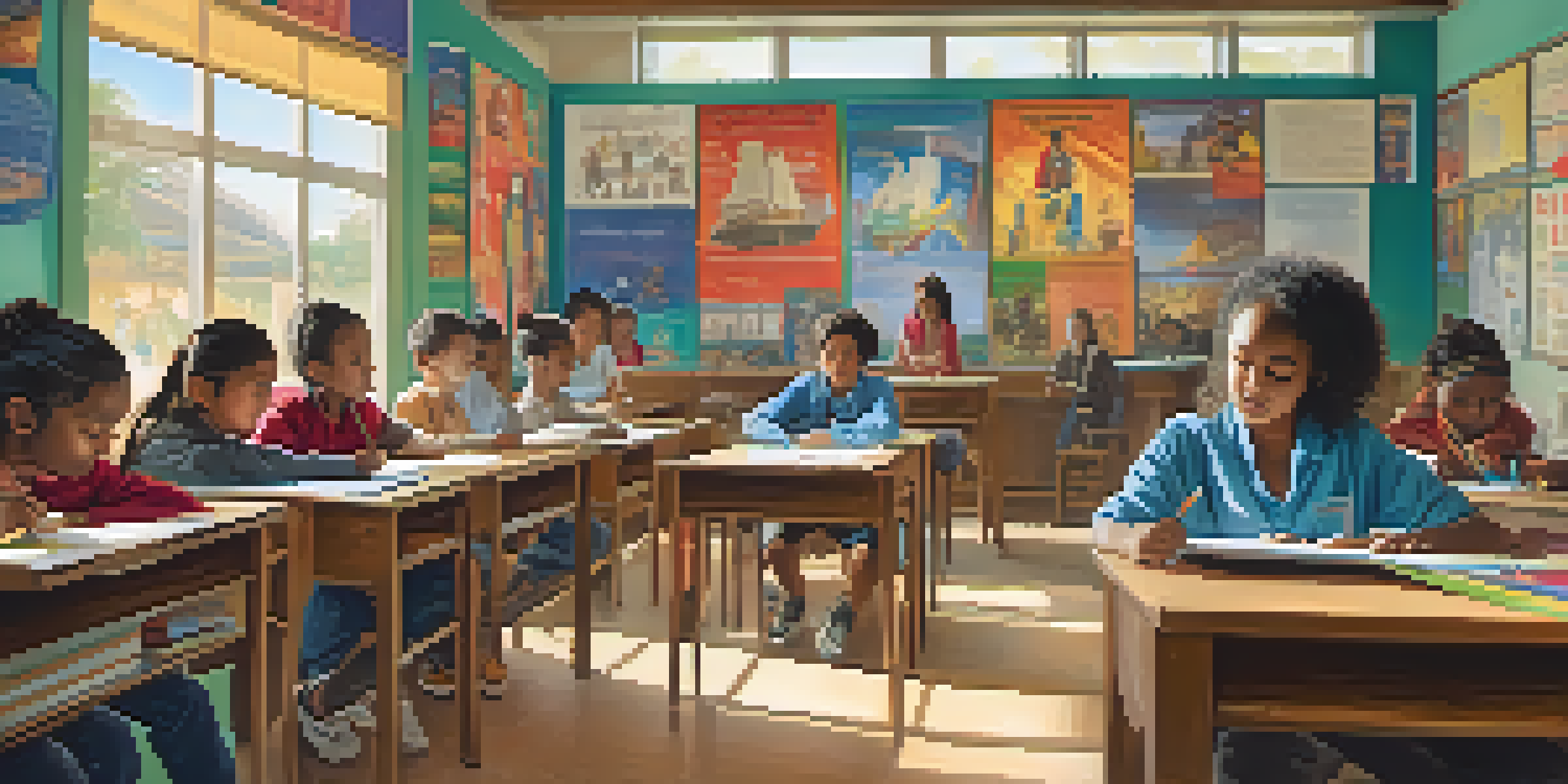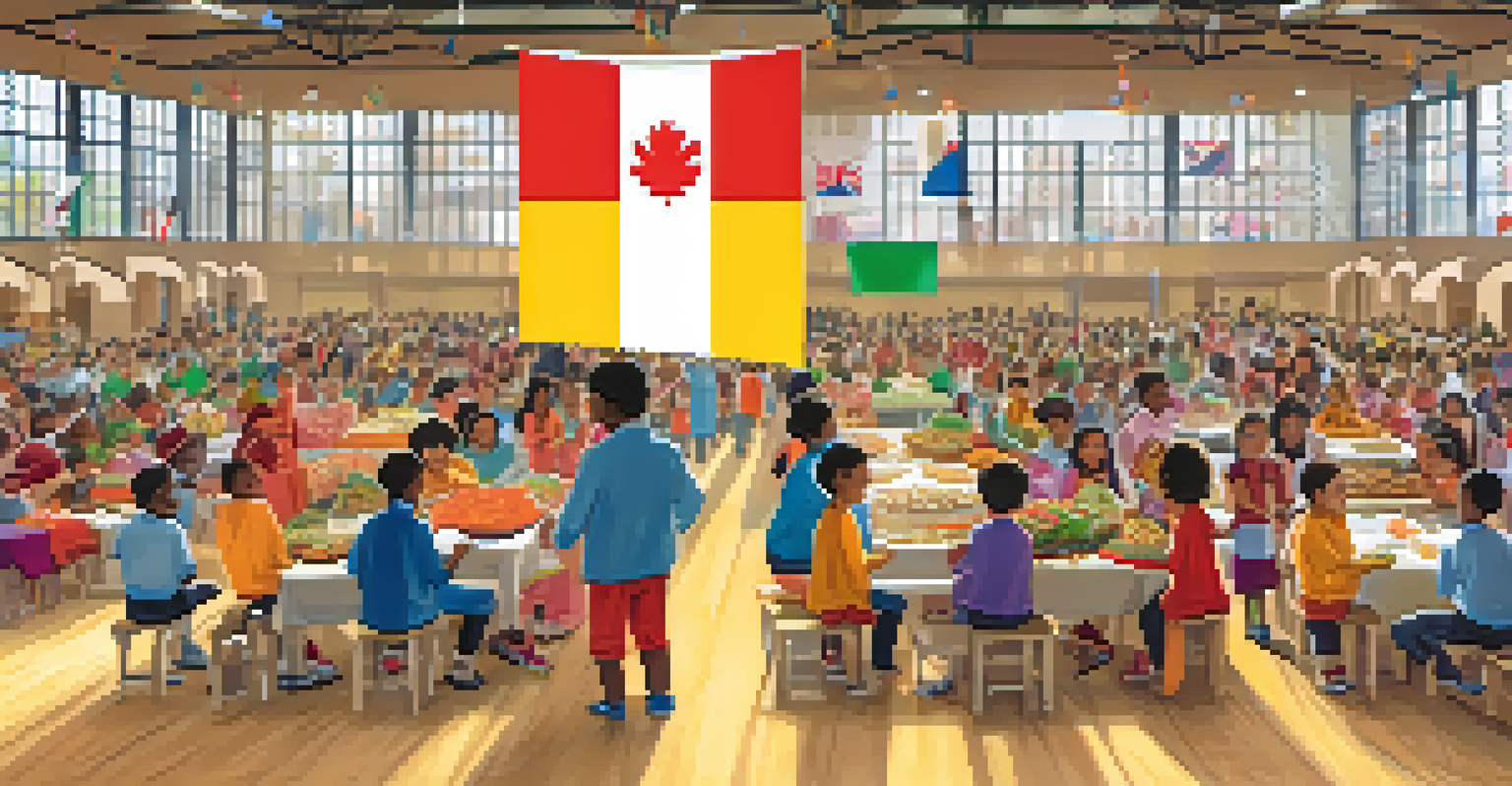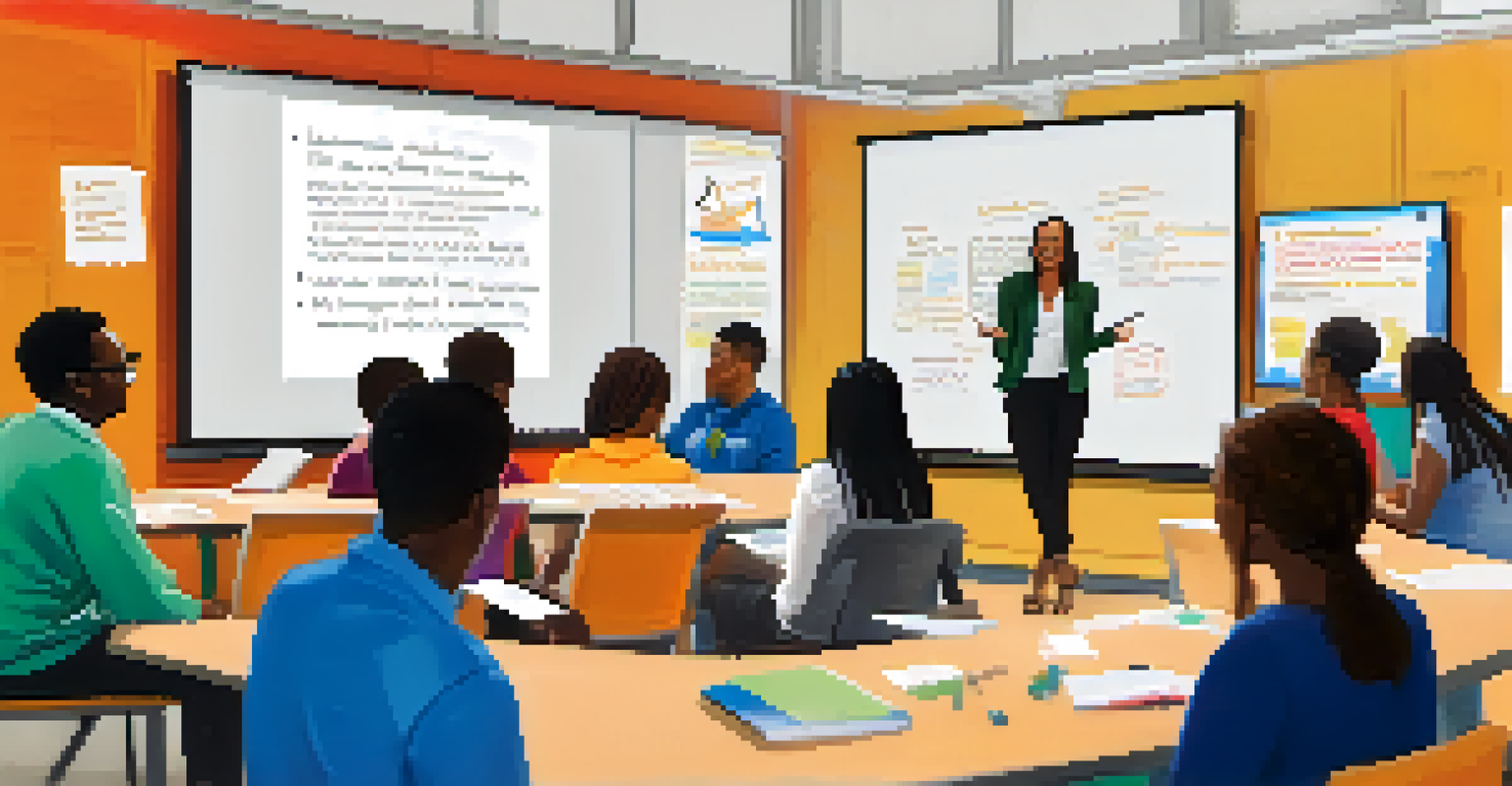Creating Culturally Relevant Learning Environments

Understanding the Importance of Cultural Relevance
Culturally relevant learning environments recognize and respect the diverse backgrounds of students. This approach not only promotes inclusivity but also enhances engagement and participation in the classroom. When students see their cultures reflected in their learning materials, they feel valued and understood, which can significantly impact their educational experience.
Education is the most powerful weapon which you can use to change the world.
For example, incorporating stories, examples, and historical figures from various cultures can make lessons more relatable. It encourages students to express their perspectives and share their experiences, fostering a sense of belonging. Ultimately, this relevance helps students connect the material to their lives, making learning more meaningful.
Moreover, culturally relevant environments equip students with the ability to navigate a multicultural world. By understanding and appreciating different cultures, they develop empathy and critical thinking skills that are essential in today’s global society.
Building an Inclusive Curriculum
Creating a culturally relevant learning environment starts with an inclusive curriculum. This means integrating diverse voices, histories, and perspectives across all subjects. Rather than a one-size-fits-all approach, educators should strive to adapt content that reflects the backgrounds of their students.

For instance, literature classes can include authors from various ethnicities and cultures, while history lessons should highlight different narratives, not just the dominant ones. This broadens students' understanding and appreciation of the world around them. It also empowers them to see themselves as part of the larger narrative.
Cultural Relevance Boosts Engagement
Culturally relevant learning environments make students feel valued and understood, enhancing their engagement and participation.
Additionally, involving students in the curriculum design process can enhance engagement. Giving students a voice in selecting topics or themes ensures their interests and backgrounds are acknowledged, making the learning experience more personal.
Creating a Welcoming Classroom Atmosphere
A welcoming classroom atmosphere is crucial for fostering cultural relevance. This can be achieved through thoughtful decor, seating arrangements, and classroom policies that promote respect and collaboration among students. When students feel physically and emotionally safe, they are more likely to participate and share their thoughts.
The beautiful thing about learning is that no one can take it away from you.
For example, displaying art or artifacts from various cultures can spark interest and conversation. Additionally, creating spaces for group work encourages collaboration and helps students learn from one another's experiences. This also builds community within the classroom.
It's also important to establish ground rules that promote open dialogue and respect for differing opinions. When students know their voices will be heard, they are more likely to engage in discussions about culture and identity, leading to deeper understanding and connection.
Encouraging Family and Community Involvement
Involving families and the community in the learning process can greatly enhance cultural relevance. Schools can host events that celebrate different cultures, inviting families to share traditions, foods, and stories. This not only enriches the learning environment but also strengthens the bond between the school and the community.
For example, multicultural nights where families showcase their heritage can provide students with first-hand experiences of different cultures. This involvement fosters a sense of pride in students’ backgrounds and encourages them to take ownership of their learning.
Inclusive Curriculum Empowers Students
An inclusive curriculum that incorporates diverse voices and perspectives broadens students' understanding and fosters a sense of belonging.
Additionally, schools can partner with local organizations to provide workshops or resources that reflect the community's diversity. Such partnerships enrich the curriculum and help students see their learning connected to the world outside the classroom.
Professional Development for Educators
To create culturally relevant learning environments, educators must engage in ongoing professional development. This training should focus on cultural competency, enabling teachers to understand their students’ backgrounds and challenges better. Equipped with this knowledge, educators can tailor their teaching methods to meet diverse needs.
Workshops and seminars can provide teachers with practical strategies for integrating cultural relevance into their lessons. For example, they can learn how to select materials that reflect the diversity of their students or how to facilitate discussions on sensitive cultural topics.
Moreover, peer collaboration and mentorship can further enhance educators' skills. Sharing experiences and resources among colleagues fosters a supportive learning community that ultimately benefits students.
Assessing Cultural Relevance in Education
Assessing the effectiveness of culturally relevant practices is essential for continuous improvement. Educators should regularly evaluate their teaching methods and curriculum to ensure they are meeting the needs of all students. Feedback from students and their families can provide valuable insights into what works and what doesn’t.
For instance, surveys or focus groups can help gather information about students’ experiences in the classroom. Understanding their perspectives allows educators to make informed adjustments to their approaches. This ongoing assessment not only promotes accountability but also encourages adaptability.
Community Involvement Enriches Learning
Involving families and the community in educational activities strengthens connections and enriches the learning experience for students.
Additionally, incorporating student performance data can help identify areas for improvement. By analyzing how well students from diverse backgrounds are performing, educators can adjust their strategies to better support all learners.
Fostering Lifelong Cultural Awareness
Creating culturally relevant learning environments is not just about the classroom; it’s about fostering lifelong cultural awareness. When students learn to appreciate and understand cultural diversity, they carry those values into adulthood. This awareness can lead to more inclusive communities and workplaces in the future.
Educators can encourage this mindset by integrating global issues and cultural discussions into everyday lessons. Encouraging students to think critically about cultural stereotypes and biases helps them develop a more nuanced understanding of the world.

Ultimately, instilling a sense of cultural relevance in education prepares students to be empathetic, informed citizens. As they navigate their lives, they will carry forward the lessons learned, contributing to a more inclusive society.